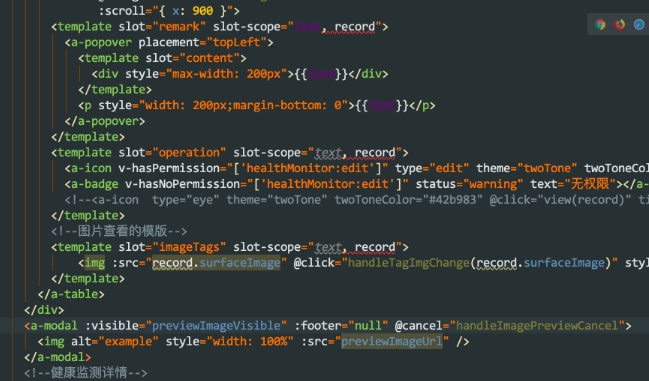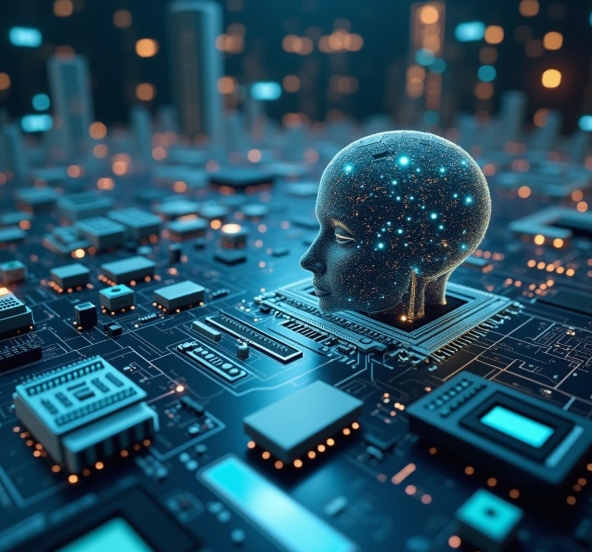Future Trends and Technology Predictions for APP Development in 2025
- latest articles
- 1.DApp Development & Customization: Merging Diverse Market Needs with User Experience 2.Analysis of the Core Technical System in DApp Project Development 3.How to achieve cross-chain interoperability in Web3 projects? 4.How does the tokenization of points reconstruct the e-commerce ecosystem? 5.How to Set and Track Data Metrics for a Points Mall? 6.What is DApp Development? Core Concepts and Technical Analysis 7.Inventory of commonly used Web3 development tools and usage tips 8.Development of a Distribution System Integrated with Social E-commerce 9.Six Key Steps for Businesses to Build a Points Mall System 10.What is DApp Development? A Comprehensive Guide from Concept to Implementation
- Popular Articles
- 1.Future Trends and Technology Predictions for APP Development in 2025 2.Analysis of the DeFi Ecosystem: How Developers Can Participate in Decentralized Finance Innovation 3.From Zero to One: How PI Mall Revolutionizes the Traditional E-commerce Model 4.DAPP Development | Best Practices for Professional Customization and Rapid Launch 5.Recommended by the Web3 developer community: the most noteworthy forums and resources 6.From Cloud Computing to Computing Power Leasing: Building a Flexible and Scalable Computing Resource Platform 7.How to Develop a Successful Douyin Mini Program: Technical Architecture and Best Practices 8.Shared Bike System APP: The Convenient Choice in the Era of Smart Travel 9.How to Create a Successful Dating App: From Needs Analysis to User Experience Design 10.From Design to Development: The Complete Process of Bringing an APP Idea to Life
Introduction
With the continuous development of the mobile internet, smartphones have become an indispensable part of people's lives. Apps (applications), as the core component of the smartphone ecosystem, are undergoing rapid changes. By 2025, with the maturation of technologies such as 5G, Artificial Intelligence (AI), the Internet of Things (IoT), Augmented Reality (AR), and Virtual Reality (VR), app development will face new opportunities and challenges.
App development is no longer just about writing code and designing interfaces; it has become a complex process integrating various new technologies and user needs. To adapt to future changes, developers and companies must continuously adjust their strategies and technical solutions to ensure their products can meet the needs of future users.
This article will explore the future trends and technological predictions for app development in 2025 from multiple dimensions, analyze how technological changes will influence the direction of app development in the coming years, and look ahead to the technologies that will dominate the field of app development.

1. The Popularization and Application of 5G Technology
1.1 The Impact of the 5G Era on App Development
By 2025, the widespread adoption of 5G technology will bring unprecedented high-speed mobile internet experiences. Compared to 4G networks, 5G offers higher download speeds, lower latency, and broader connectivity. This change will not only affect users' online experiences but also have a profound impact on app development.
Ultra-Fast Networks and Big Data: The ultra-fast speeds provided by 5G networks will greatly enhance data transmission efficiency. Developers can leverage this advantage to optimize app performance, supporting higher frequency data updates and larger-scale real-time data streams.
Low-Latency Real-Time Interactive Applications: The low-latency characteristics of 5G will promote the emergence of more real-time interactive applications, such as high-definition video conferencing, online gaming, and telemedicine. App development will require more robust real-time communication support and data processing capabilities.
High Connectivity and IoT Integration: 5G will enable billions of devices to connect in real-time, making IoT applications a key direction for app development. Developers will use apps to connect various smart devices, achieving cross-platform and cross-device collaboration.
1.2 Development Challenges Brought by 5G
Performance Optimization: Although 5G networks provide higher data transfer rates, how to fully utilize these advantages across multiple terminals remains a challenge. Developers need to focus on improving app performance to ensure stable operation in high-speed network environments.
Compatibility Issues: With the gradual rollout of 5G networks, ensuring app compatibility with different network environments and devices will also be an important issue for developers.
2. The Deep Application of Artificial Intelligence (AI) and Machine Learning
2.1 AI Enhances Personalized Experiences
By 2025, artificial intelligence will be more deeply integrated into app development, especially in the fields of personalized recommendations and intelligent assistants. Through Machine Learning (ML) and Deep Learning (DL) technologies, apps can analyze user behavior to provide more accurate services.
Intelligent Recommendation Systems: AI will drive recommendation systems in areas such as e-commerce, content distribution, and social platforms to become more intelligent. Based on user interests, historical behavior, social networks, and other data, apps can automatically recommend personalized content or products.
Intelligent Customer Service and Voice Assistants: AI-driven virtual assistants and intelligent customer service systems will become more widespread. Through Natural Language Processing (NLP) technology, apps can achieve smoother voice interactions, providing users with instant help and answers.
2.2 Automation Applications of AI in App Development
Code Generation and Automated Testing: AI will help developers improve development efficiency, particularly in code generation and automated testing. Through machine learning, AI can automatically generate code and detect bugs, significantly reducing the development cycle.
Intelligent Optimization: AI can automatically optimize an app's interface and functions based on real-time data and user feedback, enhancing the user experience. For example, AI can dynamically adjust the app's UI layout to fit different devices and screen sizes.
2.3 AI Challenges in Development
Data Privacy and Ethical Issues: AI algorithms often rely on large amounts of user data. Ensuring data privacy protection and avoiding bias and discrimination will be a major challenge in app development.
Technical Complexity: Integrating AI technology may require highly complex system architectures and substantial computational resources, posing a significant challenge for small and medium-sized development teams.

3. The Widespread Application of Augmented Reality (AR) and Virtual Reality (VR) Technologies
3.1 The Prospects of AR/VR in App Development
With advancements in hardware technology, AR and VR will no longer be futuristic fantasies but become reality. By 2025, AR and VR will permeate multiple industries, providing users with immersive interactive experiences.
Applications of AR in Shopping and Entertainment: AR technology can provide virtual fitting rooms or furniture placement previews in shopping apps, enhancing the shopping experience. In entertainment, AR will bring unprecedented immersion to games and interactive experiences.
Applications of VR in Education and Healthcare: VR can offer immersive learning experiences in education, especially in virtual training for fields like medicine and engineering. In healthcare, VR will be used for surgical simulation and patient rehabilitation.
3.2 Technical Challenges in Development
Device Adaptation: Implementing AR and VR technologies requires high-performance device support, such as smart glasses and VR headsets. Ensuring apps run smoothly on different devices is a technical challenge for developers.
Computational Resource Requirements: AR and VR have very high computational demands, requiring powerful graphics processing capabilities. Developers need to optimize app graphics rendering and performance to ensure a smooth user experience.
4. Cross-Platform Development and Low-Code/No-Code Development
4.1 The Popularization of Cross-Platform Development
Cross-platform development will continue to be a major trend in app development. With technological advancements, more development tools and frameworks (such as React Native, Flutter, etc.) will support the development of cross-platform applications, significantly reducing development costs and time.
Unified Development Experience: Developers only need to write one set of code that can run on multiple platforms like Android and iOS, greatly improving development efficiency.
Shared Code and Components: The emergence of cross-platform frameworks allows developers to share code libraries and components, enabling more efficient maintenance and updates.
4.2 The Rise of Low-Code/No-Code Development
Low-code/no-code development platforms enable non-technical personnel to participate in app development, lowering the barrier to application development. By 2025, these tools will be widely used in small and medium-sized enterprises and startups.
Rapid Prototyping and Iteration: Low-code platforms can help companies develop prototypes quickly and iterate rapidly, shortening the development cycle.
Collaboration Between Business Personnel and Developers: Low-code platforms allow business personnel to directly participate in the app development process, helping developers understand requirements and implement features more quickly.
4.3 Challenges of Low-Code/No-Code
Functional Limitations: Although low-code platforms can accelerate the development process, their functionality and flexibility are still limited and may not meet the needs of some complex applications.
Security Issues: Due to the lower barrier to entry for low-code platforms, security vulnerabilities may arise during development, requiring greater attention to the platform's security design.
5. Data Privacy and Security
As data privacy issues receive increasing attention, app development in 2025 must place greater emphasis on data protection and user privacy security.
Compliance with Privacy Regulations like GDPR: With the implementation of global privacy protection regulations (such as GDPR), app development must comply with data protection rules to ensure user data security.
Application of Encryption Technologies: Developers will need to use more advanced encryption technologies (such as end-to-end encryption) to protect user data from leakage and misuse.
6. Intelligent User Experience and Human-Computer Interaction
6.1 Innovation in Human-Computer Interaction
With advancements in artificial intelligence, voice recognition, and gesture control technologies, the ways users interact with apps will become more intelligent and natural.
Voice Control and Intelligent Assistants: By 2025, voice interaction will become one of the mainstream interaction methods in apps, allowing users to perform operations through voice commands, enhancing convenience of use.
Gesture Control and Haptic Feedback: Future apps may support gesture control and haptic feedback, further enhancing user immersion and operational experience.
6.2 Personalization and Customization
Through AI technology, apps can provide highly personalized services based on user interests, behavior habits, and needs. Personalized recommendations, customized interfaces, and intelligent push notifications will become important directions for app development.
7. Conclusion
By 2025, app development will undergo unprecedented changes. The widespread application of technologies such as 5G, AI, AR/VR, cross-platform development, and low-code development will drive app development towards a more intelligent, personalized, and efficient direction. Developers need to stay abreast of technological frontiers, continuously improve their technical skills, and adapt to rapidly changing market demands. Through innovation and agile development, developers will be able to seize future opportunities and lead the new trends in app development.
-

How to Use App Development to Boost Conversion Rates on E-commerce Platforms
With the widespread adoption of smartphones and the rapid development of mobile ···
-

How APP Development Facilitates Digital Transformation and Innovation
With the rapid advancement of information technology, digital transformation has···
-

App Store Optimization and SEO Strategies in App Development
In today's rapidly evolving mobile internet landscape, apps have become essentia···

 Blockchain
Blockchain










